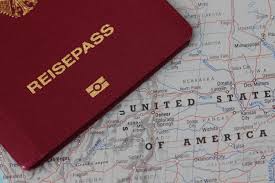The United States beckons with its diverse landscapes, vibrant culture, and boundless opportunities. To embark on this American odyssey, securing a US visa is the first crucial step. But navigating the intricacies of visa validity periods and entry allowances can be confusing. This comprehensive guide unravels the mysteries surrounding US visa validity, empowering you to confidently plan your American adventure.
Understanding Visa Types: A Spectrum of Possibilities
The US visa landscape encompasses a diverse range of visa categories, each catering to specific purposes. Common nonimmigrant visas include B-1/B-2 visas for temporary business/tourism, F-1 visas for students enrolled in academic programs, and H-1B visas for specialty occupations. Each visa category possesses a unique validity period, signifying the timeframe during which the visa remains valid for travel to the US. Furthermore, visas can be issued for single entry, multiple entries (a designated number), or unlimited entries, specifying the number of times you can enter the US during the validity period.
Validity Periods: The Duration of Your American Dream
The validity period of a US visa, displayed on the visa itself, signifies the timeframe during which you can apply for entry at a US port of entry. While some visas, like B-1/B-2 visas, can be issued with a validity period as long as 10 years, it’s crucial to remember that this doesn’t equate to the authorized duration of stay in the US. The actual length of your permitted stay is determined by the US Customs and Border Protection (CBP) officer upon arrival, typically not exceeding six months for B-1/B-2 visas. F-1 student visas often align with the duration of your academic program, while H-1B visas typically possess a three-year validity period with the possibility of extensions.
Multiple Entries: Maximizing Your American Exploration
Certain visa categories, like B-1/B-2 visas, can be issued for multiple entries, indicated by an “M” or a specific number on the visa. This allows you to make multiple trips to the US within the validity period, provided you comply with the terms of your visa and the authorized duration of stay granted by CBP officers at each entry. However, multiple entries don’t guarantee automatic re-entry. CBP officers assess your eligibility to enter the US on each arrival, considering factors like your purpose of travel, previous immigration history, and sufficient onward or return tickets.
The Nuances of Single Entry Visas: Planning Your One-Time US Trip
Some visa categories, like certain business visas (B-1), are typically issued for single entry. This signifies you can only enter the US once during the validity period. If you require subsequent visits, you’ll need to reapply for a new visa. Understanding the limitations of single entry visas is crucial to ensure a smooth travel experience and avoid potential complications at the port of entry.
Maintaining Status and Avoiding Overstays: Respecting the Rules
It’s paramount to adhere to the authorized duration of stay granted by CBP officers upon entry. Overstaying your visa can lead to severe consequences, including difficulty obtaining future visas, deportation, and even inadmissibility to the US. If you anticipate needing to extend your stay, explore options US VISA BLOG like applying for an extension of stay before the authorized period expires. Consult with an immigration attorney for guidance on the specific procedures and eligibility requirements for visa extensions.
Conclusion:
By understanding the intricacies of US visa validity periods, entry allowances, and the importance of maintaining status, you’re well-equipped to plan your American adventure with confidence. Carefully research the specific visa category that aligns with your travel goals, meticulously gather required documents, and be prepared to answer CBP officers’ questions truthfully during entry. With thorough preparation and a clear understanding of visa regulations, you can pave the way for a successful and enriching American experience.

Leave a Reply